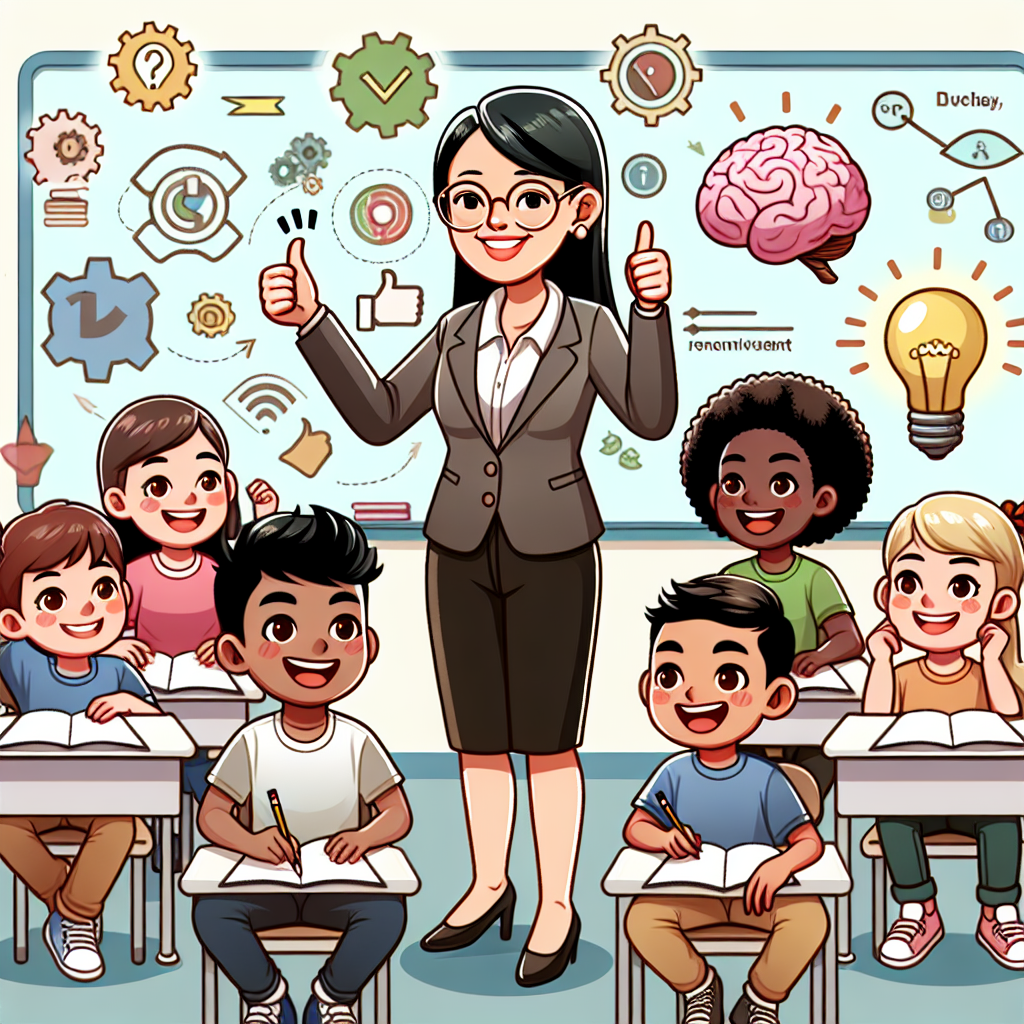Educational Psychology is a field of study that focuses on understanding how people learn and develop in educational settings. One key aspect of educational psychology is the study of motivation, which plays a crucial role in determining how students engage with their learning and achieve academic success. Positive reinforcement is a powerful tool that educators can use to motivate students and enhance their learning experiences.
Positive reinforcement is a concept that was first introduced by psychologist B.F. Skinner in the early 20th century. Skinner believed that behavior could be shaped through the use of rewards and punishments, with positive reinforcement being the most effective way to encourage desired behaviors. In the context of education, positive reinforcement involves providing students with rewards or praise when they exhibit behaviors that contribute to their learning and academic success.
The impact of positive reinforcement on student motivation in educational psychology is significant. When students receive positive reinforcement for their efforts and achievements, they are more likely to be motivated to continue learning and striving for success. This can lead to increased engagement in classroom activities, improved academic performance, and a more positive attitude towards learning.
One of the key ways in which positive reinforcement can enhance student motivation is by providing immediate feedback and rewards for desired behaviors. For example, if a student successfully completes a homework assignment or participates in a classroom discussion, the teacher can provide immediate praise or a small reward to reinforce the behavior. This positive feedback encourages the student to continue engaging in similar behaviors in the future.
Another way in which positive reinforcement can impact student motivation is by increasing students’ self-esteem and confidence. When students receive praise and recognition for their efforts, they are more likely to believe in their own abilities and feel confident in their academic skills. This can lead to a positive cycle of motivation, in which students are more willing to take on challenges and persevere in the face of obstacles.
Positive reinforcement can also help to create a positive classroom environment that fosters a sense of community and collaboration among students. When students feel supported and valued by their teachers and peers, they are more likely to engage in classroom activities and work together towards common goals. This sense of belonging and camaraderie can further enhance student motivation and lead to a more positive learning experience for all.
In addition to these benefits, positive reinforcement can also help to reduce negative behaviors and improve classroom management. By focusing on rewarding positive behaviors rather than punishing negative ones, teachers can create a more positive and supportive learning environment that encourages students to behave in respectful and responsible ways. This can lead to a more harmonious classroom atmosphere and allow for more effective teaching and learning to take place.
Overall, the impact of positive reinforcement on student motivation in educational psychology is clear. By providing students with immediate feedback, rewards, and recognition for their efforts, educators can encourage students to engage actively in their learning and strive for academic success. Positive reinforcement can enhance student self-esteem, foster a sense of community and collaboration, and improve classroom management, leading to a more positive and effective learning environment for all.
FAQs:
Q: How can educators effectively implement positive reinforcement in the classroom?
A: Educators can implement positive reinforcement by providing immediate feedback and rewards for desired behaviors, focusing on rewarding positive behaviors rather than punishing negative ones, and creating a supportive and collaborative classroom environment.
Q: What are some examples of positive reinforcement strategies that educators can use in the classroom?
A: Examples of positive reinforcement strategies include providing verbal praise, giving out small rewards or tokens, creating a reward system for achieving specific goals, and fostering a sense of community and collaboration among students.
Q: How can positive reinforcement impact student motivation in the long term?
A: Positive reinforcement can impact student motivation in the long term by enhancing student self-esteem and confidence, fostering a positive attitude towards learning, and creating a supportive and engaging learning environment that encourages students to strive for academic success.
Q: Are there any potential drawbacks or limitations to using positive reinforcement in the classroom?
A: While positive reinforcement can be a powerful tool for motivating students, it is important for educators to use it in a balanced and consistent manner. Over-reliance on rewards or praise can lead to a sense of entitlement or dependency among students, so it is important to use positive reinforcement alongside other teaching strategies.




Leave A Comment